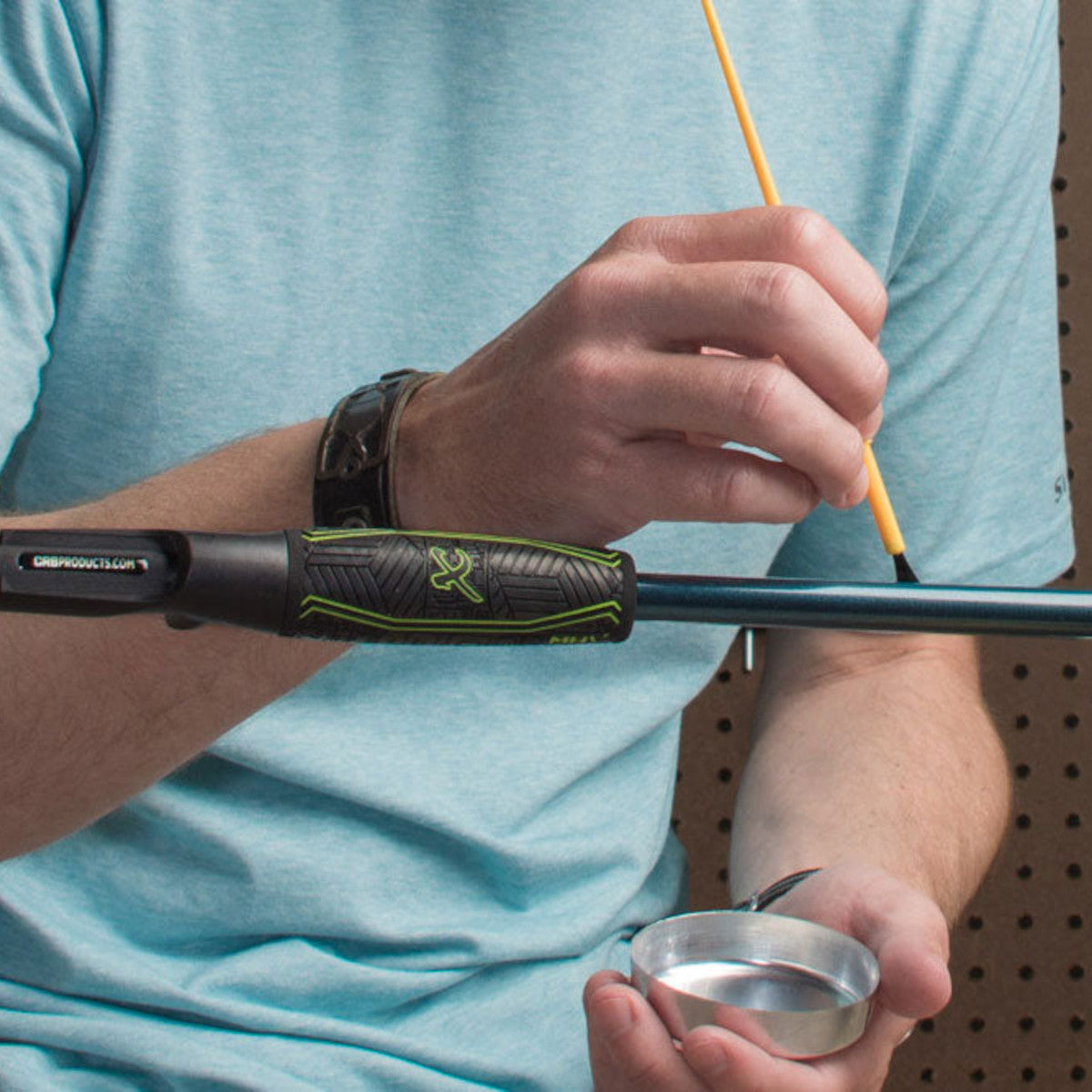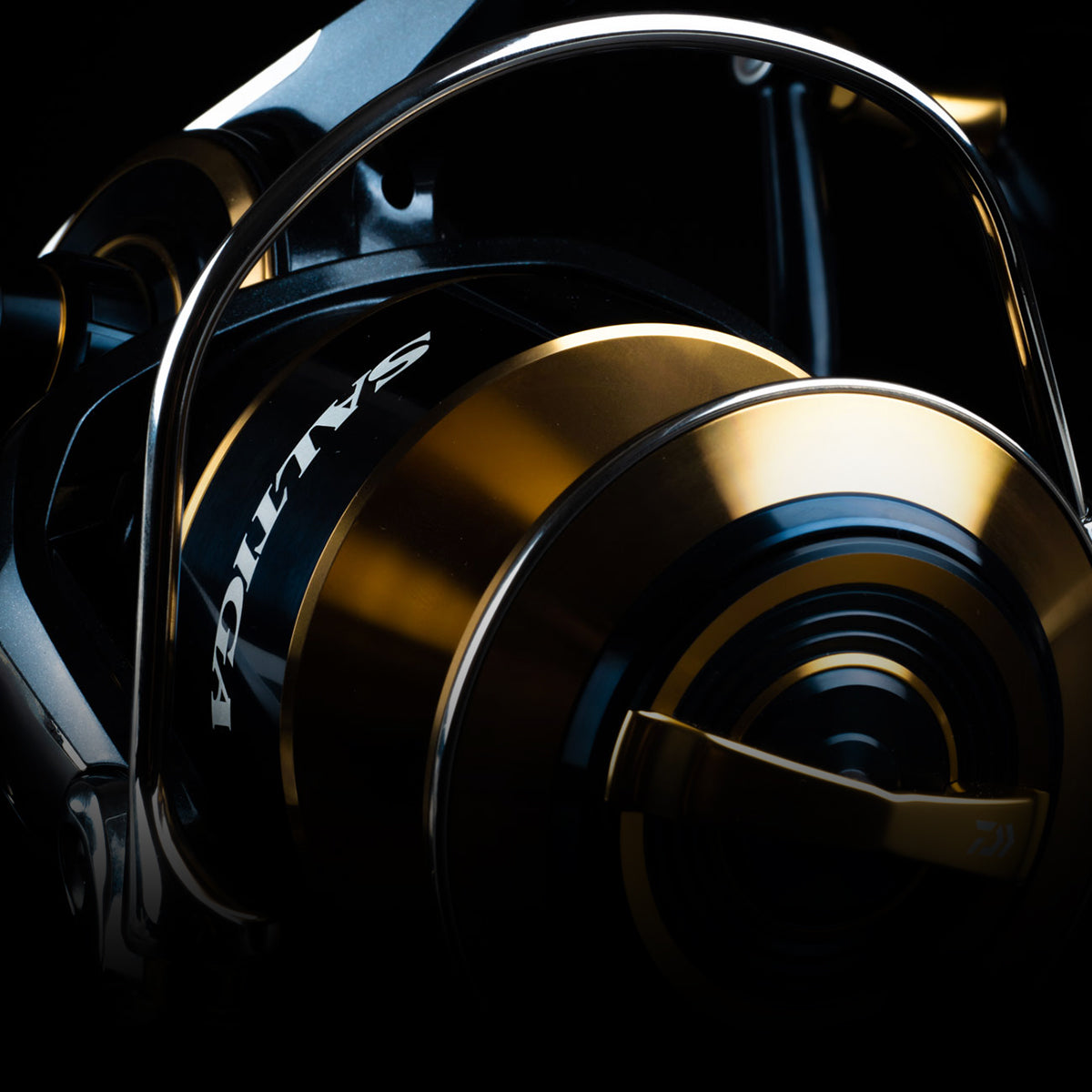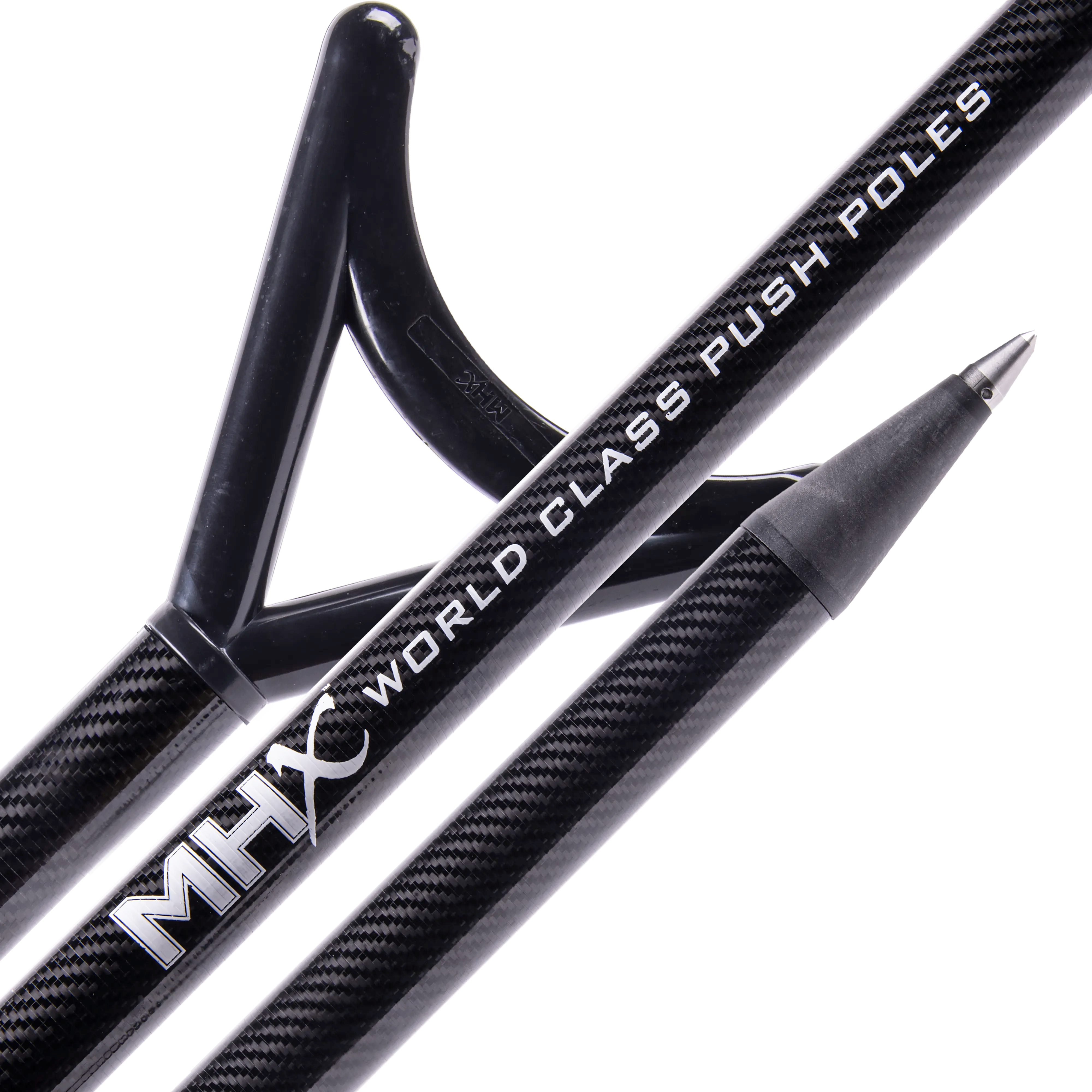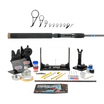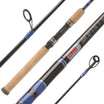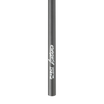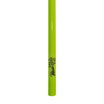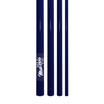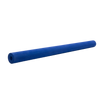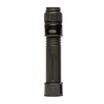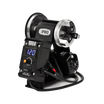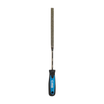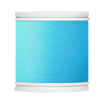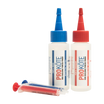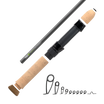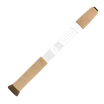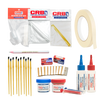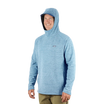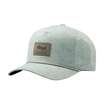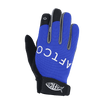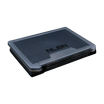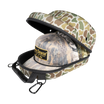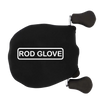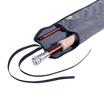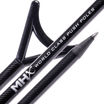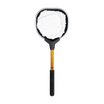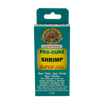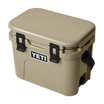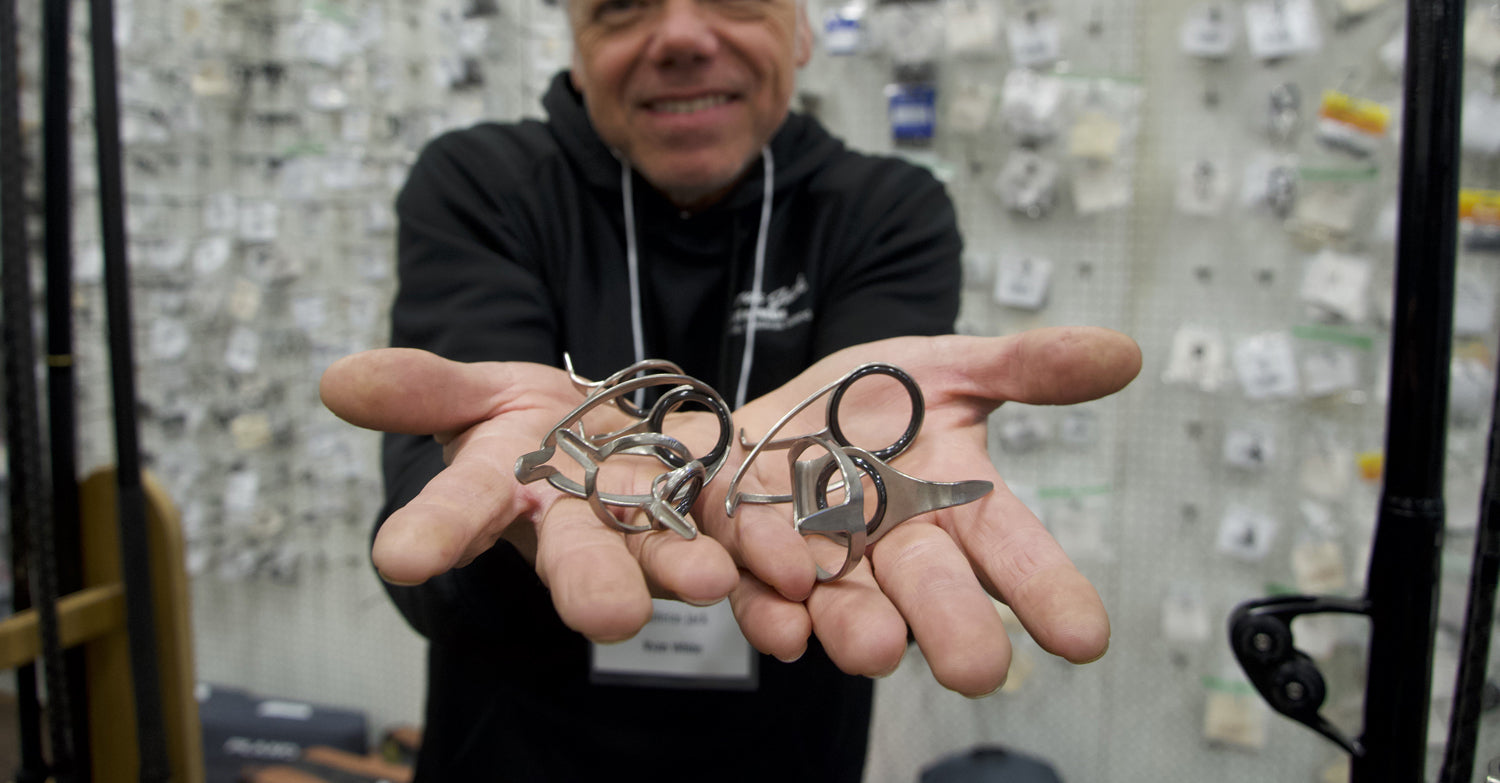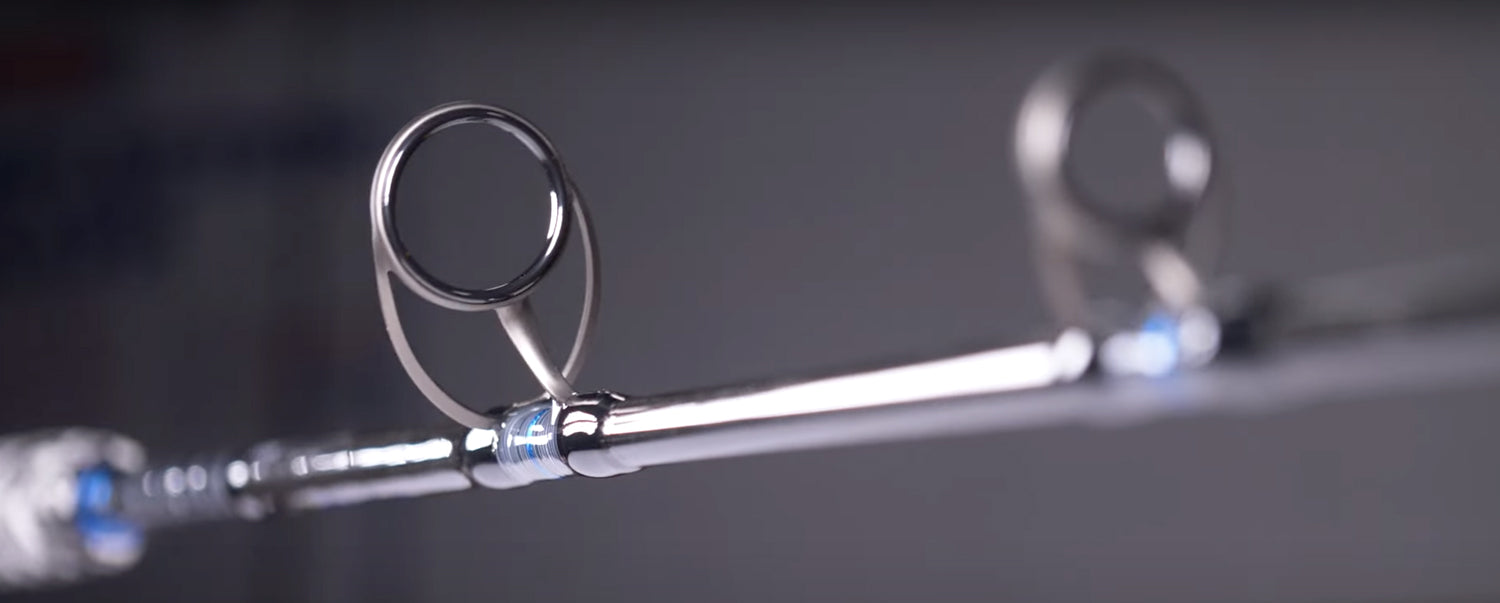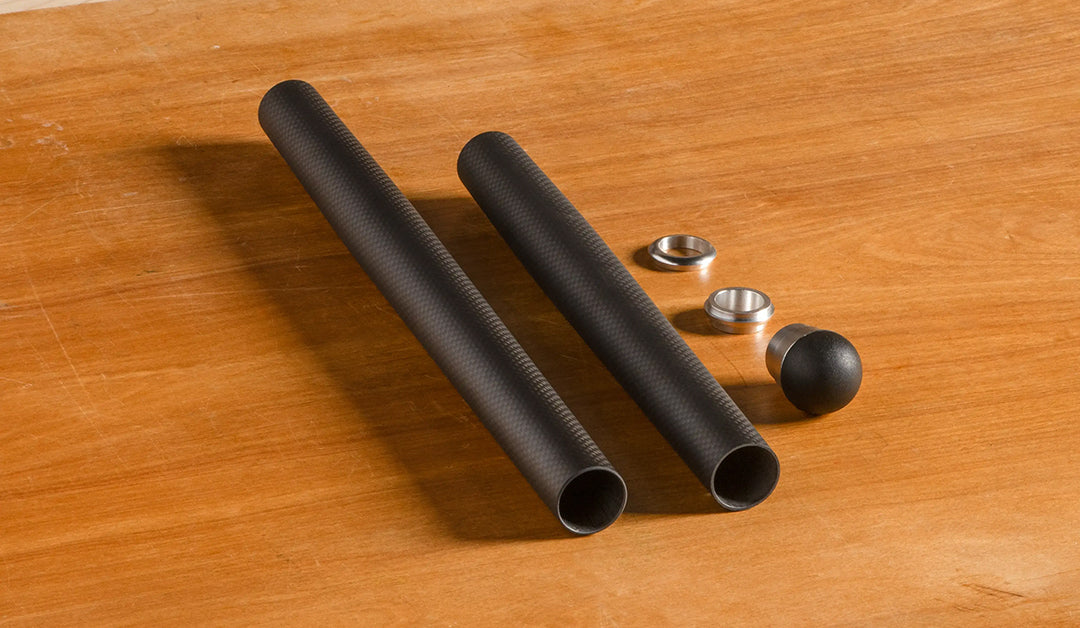When selecting the components for your custom build, it's essential to consider your specific requirements. Most common being cost, performance, aesthetics, and the benefits associated with higher-priced options. Assess whether the additional expense justifies the added benefits and functionality you seek.
Although some rod builders tend to just see the price tag when looking at titanium, in certain situations the benefits of this material can considerably outweigh the cost.

When considering rod guides, it's essential to recognize the range available, spanning from lower-cost to premium options. Your choice should align with the desired outcome for your finished fishing rod. Since the design of rod components is paramount, it's crucial to prioritize reputable guide manufacturers and stick with trusted brands. This ensures optimal performance and reliability for your fishing rod. For the sake of this article, I will reference major Brands like CRB, Fuji, American Tackle and REC.
Metals corrode due to exposure to extreme environments, causing them to break down over time. While all metals undergo this process, certain metals exhibit greater resistance to corrosion. Titanium, commonly used today, and top-grade 316 stainless steel are prime examples of such corrosion-resistant metals.
Fun Facts About Titanium
Titanium is renowned for its durability and strength, surpassing steel in these aspects while also being lighter and more flexible. These characteristics have led to its widespread use in medical devices, airplanes, and various military and engineering applications. Titanium exhibits exceptional resistance to extreme temperatures and saltwater exposure, making it highly versatile. However, its strength and durability are contingent upon meeting certain standards, underscoring the importance of choosing recognized brands for reliability and performance assurance.

Titanium is a resilient metal known for its high reactivity. When exposed to environments such as saltwater, or extreme temperatures, titanium forms titanium oxide on its surface. This oxide layer quickly develops, creating a robust and nearly impenetrable barrier that shields the underlying pure titanium metal from further corrosion.
So now that you are schooled up on titanium, is it necessary? No, but is it awesome? Yes.
Fly Fishing Components
There are several instances where I would use titanium components. Let’s start with one of my favorites, saltwater fly fishing. Fly rods can live a hard life in the salt. From fighting fish to sliding in and out of under gunwale rod tubes, it is always better to spend a little extra on nice components. My choice is a mix of two popular manufactures Fuji and REC.

The Fuji K-Series Double-Foot Casting & Spinning Guides I prefer as your stripper guides. Titanium frames and the SiC ring helps manage tangles and protect your fly line and backing from hard running fish. As for the snake guides, I switch over to the REC RSNX Heavy Duty/Saltwater Snake Guides as they are a unique type of titanium guide. They are made from a pure alloy of nickel titanium and offer an unparalleled blend of extreme hardness, low friction, and lightweight properties. The RECOIL shape-memory alloy is highly flexible, resulting in guides that weigh 50 percent less than conventional sets. In addition, the alloy's corrosion-resistant nature ensures durability in any environment, while its unique ability to spring back to its original shape even after repeated crushing down to the rod blank enhances longevity and performance.
Saltwater Fishing
So, I believe there is always an argument for or against using titanium but one of the areas where it has the edge over other metal components is in saltwater. When it comes to saltwater fishing, opting for top-notch guides is crucial to uphold the durability and effectiveness of your fishing rod. Titanium stands out as one of the premier materials for saltwater fishing guides.

We have spoken about its corrosion resistant properties, and this is certainly number one. For rods that spend their life in the salt it cannot be overstated how having a quality guide makes a difference. Remember, just because the rod isn’t being fished at that moment, it is living in a salty environment. There is salt in the air, salt in the water and one thing about salty environments, it is hard on everything.
Since saltwater can encompass both light tackle inshore and heavy duty offshore, I am going to split them into two categories for choosing guides.
For the offshore scene it is awfully hard to get away from the offerings from American Tackle. When building for big game offshore pelagic or bottom fish I am going to go with the solid titanium options like the AT Turbo Boat Rod Guides for my sailfish, dolphin, and cobia rods.
If I am going to be trolling for big tuna or deep dropping for swordfish the Virtus UL Unlimited Class Saltwater Rod Guides get the nod. These are also full titanium with a nanolite ring and are rated for 50 up to 200lb class rods.
Since we covered the big game stuff lets slide inshore and talk about chasing everything from tarpon, big snook and redfish down to more delicate skinny water flats fishing.
When it comes to the larger inshore fish, these rod builds with either be conventional or heavy spinning. For both options I choose the American Tackle TiForged Double Foot Guides. Reason I like the TiForged is that they are a great option for either setup and do have a stainless steel option if you do not want to spring for the titanium. You still get all the great features of the nanolite ring and snagless design whether you go stainless or titanium and that is something not often seen in guides. In addition, they have a black titanium as well, which looks really sharp!
Light Inshore Flats Fishing
Let’s slide up on the flats and add a little bit of finesse to this saltwater game. When I say finesse, I’m not talking about small fish, but the way you fish and delivery is more technical. Our guide train needs to be put together with thought and proper spacing, so when we spend good money on this custom rod it performs perfectly. There is very little room for error when stalking fish on clear water flats, so we need to control everything that is in our control.
My choice will be the Fuji K-Series Single-Foot high frame in a concept style train. I match this set to the size of the reel I am fishing and take extra care in static deflection to know my spacing is dead on. I do like the SiC version for the flats as you get the benefits of titanium with the proven performance of SiC rings. Yes, you can always splurge for the Torzite ring but I have so much confidence in the titanium with SiC ring it is hard for me to change.
As I mentioned above with the American Tackle TiForged, these Fuji high frame spinning guides also come in a stainless-steel version and Fuji has a proprietary Corrosion Control finish to add a little extra protection to their stainless guides.
Whether you take the titanium or stainless route your running guides to match the Fuji K high frames will be these Fuji K-Series Single-Foot Belly Guides. These are available in size 4 through 7 and come in both metals with a different selection of ring types. It is one of their most popular guides and trusted the world over.
Freshwater Fishing
This is an area where the arguments start. On one hand the nod goes to titanium for its light weight. Titanium is incredibly lightweight, making it an excellent overall guide choice. Anglers for years have argued lighter guides allow for greater sensitivity and a more balanced rod. Some say just the weight saving alone can can make a big difference as it helps to reduce fatigue over long days on the water.
Whereas I think we can all agree titanium is a lighter material in the same size and frame design as its stainless-steel counterpart but are those fractions of grams worth it in terms of extra cost? That is for you to decide. If you are really looking for the lightest possible guide, you will need to move to a guide without a ceramic insert as the ring is what creates all the weight in a guide. Something like the CRB SSR or the TiForged or Vortex Air guides from American Tackle.
If you just must have titanium and want the lightest ones available, the RSPG Recoil Spinning Rod Guides are the ones. As mentioned above in the saltwater fly fishing they are uniquely flexible and have no ring to break or pop out. As with the fly rod you can do a combination of one or two double footed guides with ceramic ring and then Recoil runners. A word to the wise, be sure to check the measurements on the Recoil spinning guides as their size number does not correlate to the ID in millimeters like all other fishing rod guides. Here is a great example of the black pearl Recoils by our friend and customer, SCENKO STIX

Ice Fishing
Speaking of REC Recoil guides, I wanted to mentioned ice fishing. Granted, I understand I am a 4th Generation Floridian and have little room to talk when it comes to ice fishing, but I did find having Recoils on my ice rod nice when I needed to clear the guides. In addition, REC has made ice specific Recoils due to the way the titanium and zinc alloy can react in extreme cold temperatures. No, I was not in extreme cold by ice fishing standards but when I am standing on a frozen lake and the guides are icing up, that is extreme to me. So, take my ice advice with a gain of road salt but they did make my ice fishing experience a little easier.
Here is that rod recipe from our Wisconsin ice trip featuring the REC Recoil Ice Guides.
So, hopefully that helps you choose whether titanium guides are right for your next custom rod build. Remember, if you have read any blogs before this or watched the previous 109 episodes of Mud Hole Live, you know there are not too many things in rod building that are "wrong". With that being said, if you want titanium guides on a six foot panfish rod for your farm ponds, have at it! Send in some build photos though as we love seeing cool rod builds.


